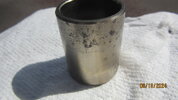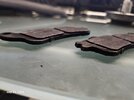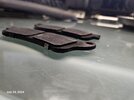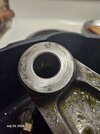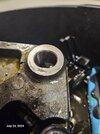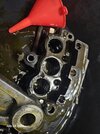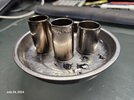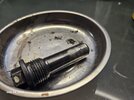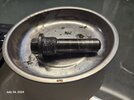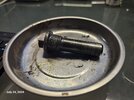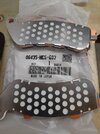Some background needed (in order to decide how deep to get into calipers/SMC): a) was brake system overhauled since you bought the bike? b) was a maintenance schedule followed after a)?
There are 2 aspects here: 1) calipers and 2) SMC.
1 - Caliper Condition: if calipers were taken apart since you've had the bike, cleaned and components reviewed for wear/condition, then you'd have a baseline where you'd know the condition of the parts and the need for replacement. Should calipers never had been overhauled now is as good a time as ever.
Given the bike's mileage, a simple cleaning of the piston walls, fluid flush and pads would not provide information such as: are piston walls pitted, are the bores corroded, are seal grooves clean, etc.
The rear brake caliper bracket needs also inspected because it locates the rear brake pads via a retainer clip attached to the bracket. In my case the retainer clip was missing and the pads dug up into the bracket.
2 - SMC (secondary master cylinder) Condition: this is a critical component of the bike brake system that works in conjunction with the left front brake caliper. If you have never had the SMC apart, I would first read the brake system articles on this forum to understand operation and particulars of taking this apart and reassembly. There are a few indicators of the state of the SMC, starting with push rod spherical union condition, bore entry condition and the white plastic mesh filter cartridge cleanliness - see jfheath articles with cut-outs of the SMC. I don't believe SMC replacement should be automatic, its function is as important as the front brake MC (or any MC), which, should the return port get blocked by dirt will cause front brake drag and/or lock up.
I am stopping here as this may be a lot more answer than what you're asking. Should all of this - above - sound daunting I'd find a member in your are who's done it and is willing to help. Or, if you've worked on braking systems before I'd piece meal it. Or, I'd just give it a superficial cleaning - push pistons out some (careful, not too much) and clean walls, push back and install pads, then schedule overhaul as a winter project.

